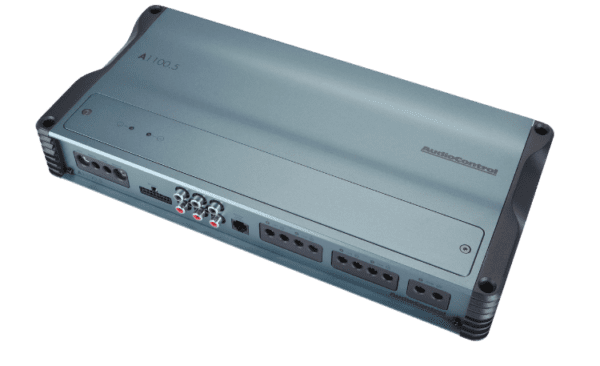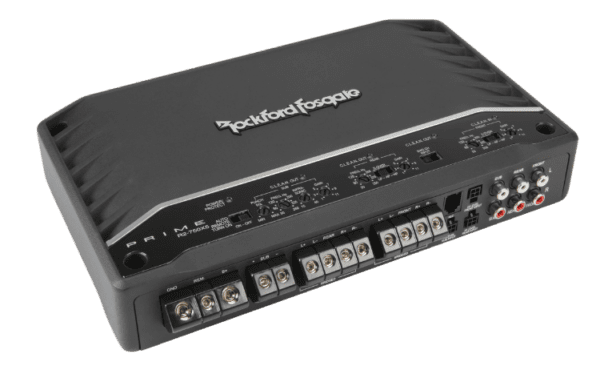Alpine R2-A75M
$600.00
R2-Series mono subwoofer amplifier — 750 watts RMS x 1 at 2 ohms
Powerful, realistic bass. Alpine’s R2-Series R2-A75M is a high-performance mono subwoofer amplifier designed to deliver clean, powerful bass reproduction for audiophiles who demand exceptional sound quality. With up to 750 watts RMS of power, this amplifier reproduces low frequencies with enhanced realism and clarity, even when playing high-resolution audio.
The R2-A75M incorporates premium technologies from Alpine’s top-tier amplifiers, including high-efficiency transformers, low-noise custom capacitors, and low-distortion dual “Sierra” feedback/correction circuitry. Its advanced Class D design allows for powerful output in a compact form factor, making it versatile enough to fit in almost any installation location.
Product Highlights
- Type: Class D mono subwoofer amplifier
- Power Output (CTA-2006 Compliant):
- 500 watts RMS × 1 at 4 ohms
- 750 watts RMS × 1 at 2 ohms
- Frequency Response: 10-400 Hz
- Signal-to-Noise Ratio: 75 dBA (reference: 1 watt into 4 ohms)
Key Features
- Premium Components: High-efficiency transformers and custom capacitors for superior sound
- Subwoofer Optimization:
- Variable low-pass filter (50-400 Hz, 24 dB/octave)
- Variable subsonic filter (8-40 Hz, 24 dB/octave)
- Adjustable bass boost (0-12 dB at 50 Hz)
- Versatile Inputs: Both preamp and speaker-level inputs (up to 10V)
- Simplified Installation: Parallel speaker output terminals for easy connection of multiple subwoofers
- Remote Control Ready: Optional RUX-KNOB.2 wired remote bass level control
- System Expansion: Preamp outputs for connecting additional amplifiers
Package Contents
- Mono subwoofer amplifier (with two installed 40A ATO fuses)
- Four 1″ pan-head screws
- Allen keys (3mm, 2.5mm)
- Owner’s manual and documentation
Performance & Power
- RMS Power Output (CTA-2006 Compliant):
- 500 watts × 1 at 4 ohms
- 750 watts × 1 at 2 ohms
- Frequency Response: 10-400 Hz
- Signal-to-Noise Ratio:
- 75 dBA (at 1 watt into 4Ω)
- 102 dB (at rated power output, 4Ω)
- Total Harmonic Distortion: ≤1% at rated power
- Minimum Impedance: 2 ohms
- Input Voltage: 14.4V
Physical Dimensions
- Dimensions:
- Width: 11-1/8 inches (11.12″)
- Height: 2-1/4 inches (2.23″)
- Depth: 6-15/16 inches (6.91″)
- Fuse Rating: 40A × 2
- Recommended Power/Ground Wire: 4-gauge
Amplifier Design
- Amplifier Class: Class D (high efficiency design)
- Built-in DSP: No
- Cooling: No fan (passive cooling)
- Construction: Premium components including:
- High-efficiency transformers
- Low-noise custom capacitors
- Dual “Sierra” feedback/correction circuitry
Controls and Settings
- Gain Control
- Rotary gain control to match input signal voltage
- Input Sensitivity:
- Line level: 0.1 volts to 4.0 volts
- Speaker level: 0.4 volts to 10 volts
- Input Configuration
- Input Level Switch: Hi (speaker level) or Lo (line level)
- Crossover and Filter Controls
- Low-Pass Filter:
- Always engaged (cannot be bypassed)
- Adjustable from 50 Hz to 400 Hz
- 24 dB/octave slope
- Subsonic Filter:
- Adjustable from minimum to 40 Hz
- 24 dB/octave slope
- Removes super-low frequencies that subwoofers cannot cleanly reproduce
- Bass EQ (Bass Boost):
- Adjustable from 0 dB to +12 dB
- Centered at 50 Hz
- Low-Pass Filter:
- Turn-On Options
- 2-way switch:
- REM: Remote turn-on lead from head unit
- DC: Automatic activation by DC voltage from speaker-level inputs
- 2-way switch:
Connections
- Power/Ground Terminals: Set-screw terminals (accept up to 4-gauge wire)
- Remote Turn-on Terminal: Set-screw terminal (accepts up to 8-gauge wire)
- Speaker Output Terminals: Two pairs of set-screw terminals (accept up to 8-gauge wire)
- Internally wired in parallel for easy connection of multiple subwoofers
- Signal Inputs:
- Stereo RCA jacks
- Compatible with line-level or speaker-level signals
- Speaker-level inputs require RCA adapter cables (not included)
- Preamp Outputs:
- Two RCA jacks for system expansion
- Pass-through design (unaffected by amplifier’s settings)
- Remote Control Port: RJ-25 jack for optional RUX-KNOB.2 wired remote bass level control
Related products
-
Amplifier
Alpine S2-A120M
Rated 0 out of 5$550.00Original price was: $550.00.$490.00Current price is: $490.00. Add to cart





